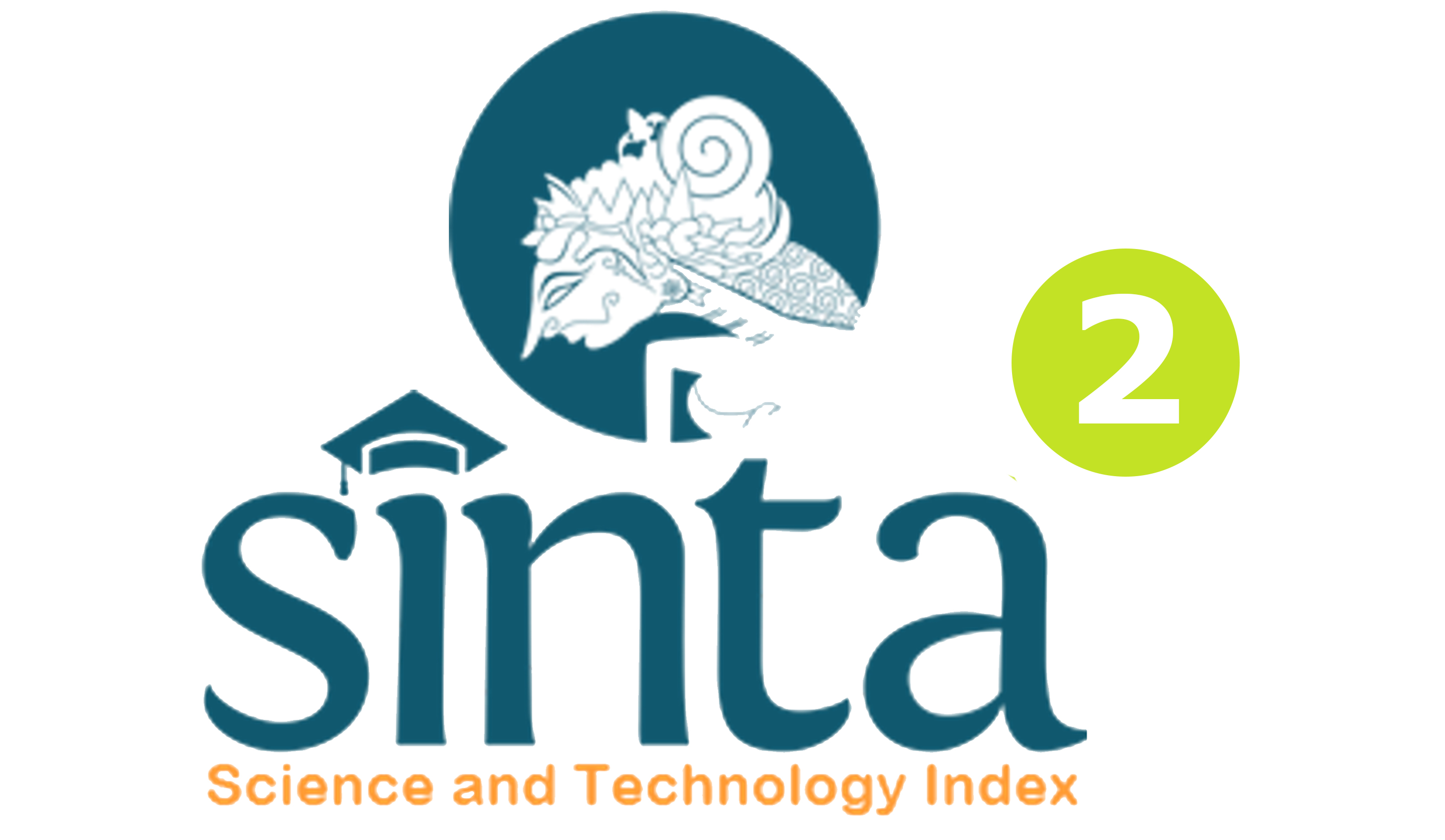JOURNAL ACCREDITATION
Submissions
Submission Preparation Checklist
As part of the submission process, authors are required to check off their submission's compliance with all of the following items, and submissions may be returned to authors that do not adhere to these guidelines.-
The submission has not been previously published, nor is it before another journal for consideration (or an explanation has been provided in Comments to the Editor).
Pastikan naskah ini tidak pernah diterbitkan sebelumnya! -
2.Author(s) Identity: Author(s) Name only (i.e., no degrees or position titles listed), Institution Name, at City (if applicable). Correspondence concerning this article should be addressed to Author Name, full mailing (including street or PO Box) address, City, State (using postal abbreviation), zip code (e-mail: name@name.ac.id) (if any).
Nama Penulis tanpa gelar -
Abstract: The length of the article between 100 - 150 words. If possible, avoid to contains no information who not included in the paper; trade names, acronyms, abbreviations, or symbols.
Penulisan abstrak hendaknya tanpa simbol, akronim dan singkatan -
The keyword(s) are relevant for indexing purposes. Please select a maximum of 5 words to enable your manuscript to be more easily identified and cited.
Minimal berisi 3 kata kunci dan maksimal 5 kata kunci. Tiap-tiap kata kunci dipisahkan oleh (;) -
Tables and Figures: No more than 5 tables and 5 figures with each manuscript will be accepted. Please be sure to indicate the table or figure callouts within the manuscripts. Figures (graphs, illustrations, line drawings) must be supplied in electronic format with a minimum resolution of 600 dots per inch (dpi) up to 1200 dpi. Halftone line screens should be a minimum of 300 dpi. JPEG.
Sertakan sumber dalam tabel dan gambar yang disajikan. -
References should follow the style detailed in the APA 6th Publication Manual. Make sure that all references mentioned in the text are listed in the reference section and vice versa, and that the spelling of author names and years are consistent.
Referensi harus mengikuti style APA 6th, disarankan menggunakan Referensi Manajer (mendeley, endnotes, zotero) - The manuscript clear from footnote or endnote in any format; incorporate any information within the body of the manuscript.
- The body text of manuscript typed with one space, one column, Time New Roman; size 10; alignment justify; except the title using size 10; Bold, left alignment and Sentences case.
- Authors grant Bisma Journal the right of first publication. Although authors remain the copyright owner.
Privacy Statement
This journal provides immediate open access to all article on the principle that making research freely available to the public; supports a greater global exchange of knowledge; and invaluable way to maximize the visibility and impact of research, especially counseling and Education field. This means:
- Everyone has free and unlimited access to the full-text of all articles published in BISMA journals;
- Everyone is free to re-use the published material if proper accreditation/citation of the original publication is given;
- Open an opportunity for potential benefits for society, this can improve the research profile of author(s);
- Open access publication is supported by the authors' institutes or research funding agencies by payment of a comparatively low Article Processing Charge (APC) for accepted articles.
Important Note: some articles (especially Reviews) may contain figures, tables or text taken from other publications, for which BISMA Journal does not hold the copyright or the right to re-license the published material. Please note that you should inquire with the original copyright holder (usually the original publisher or authors), whether or not this material can be re-used.







